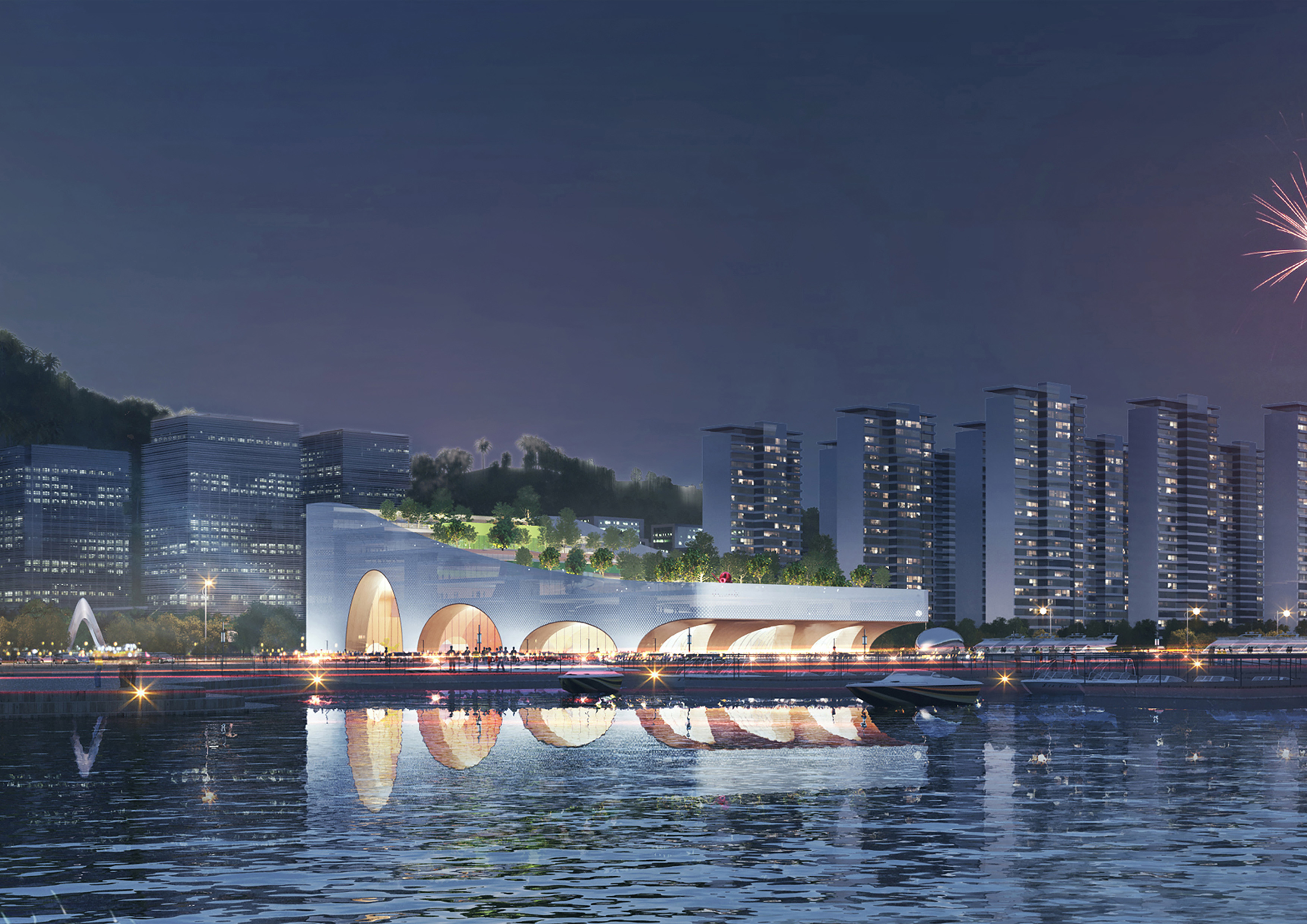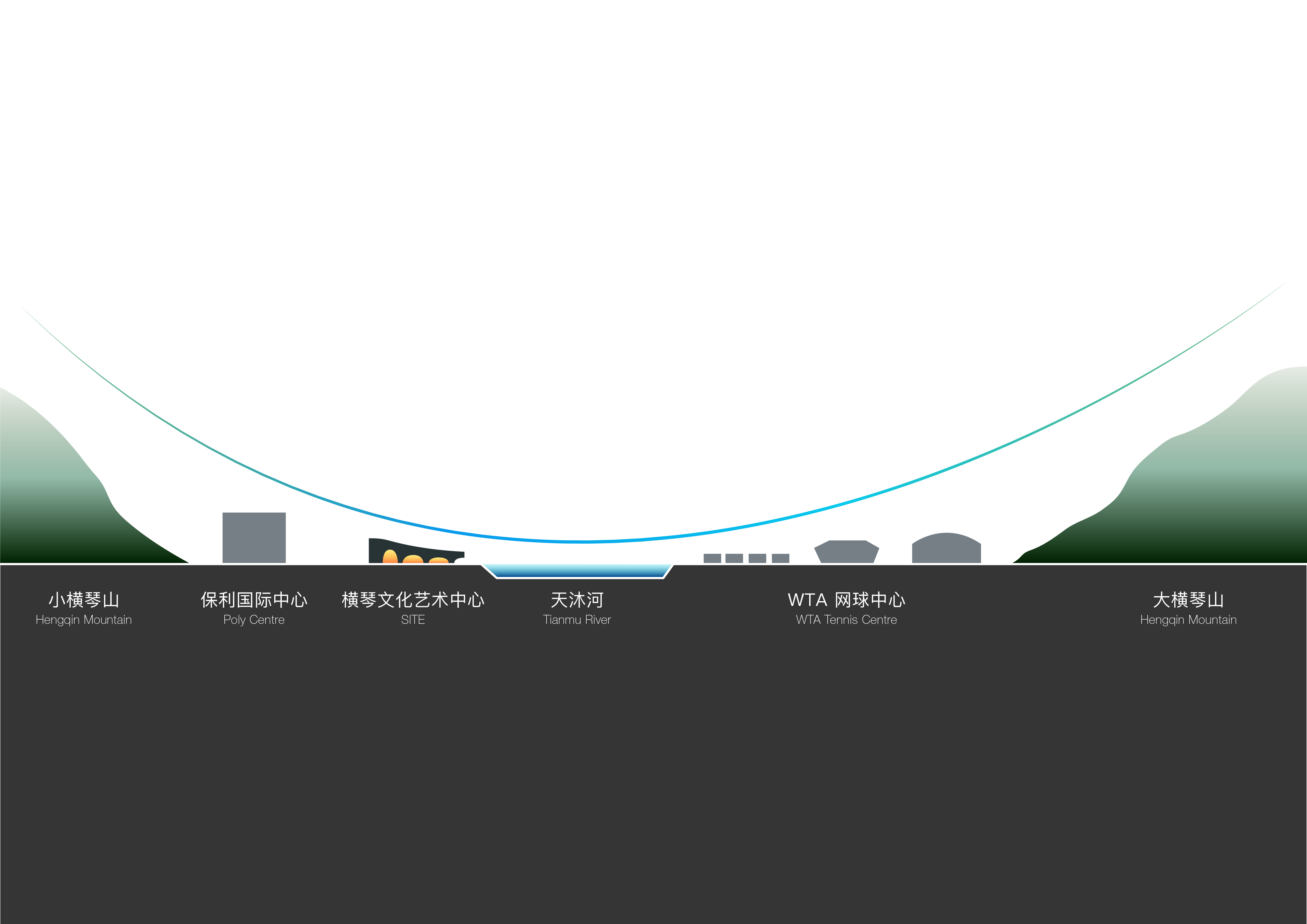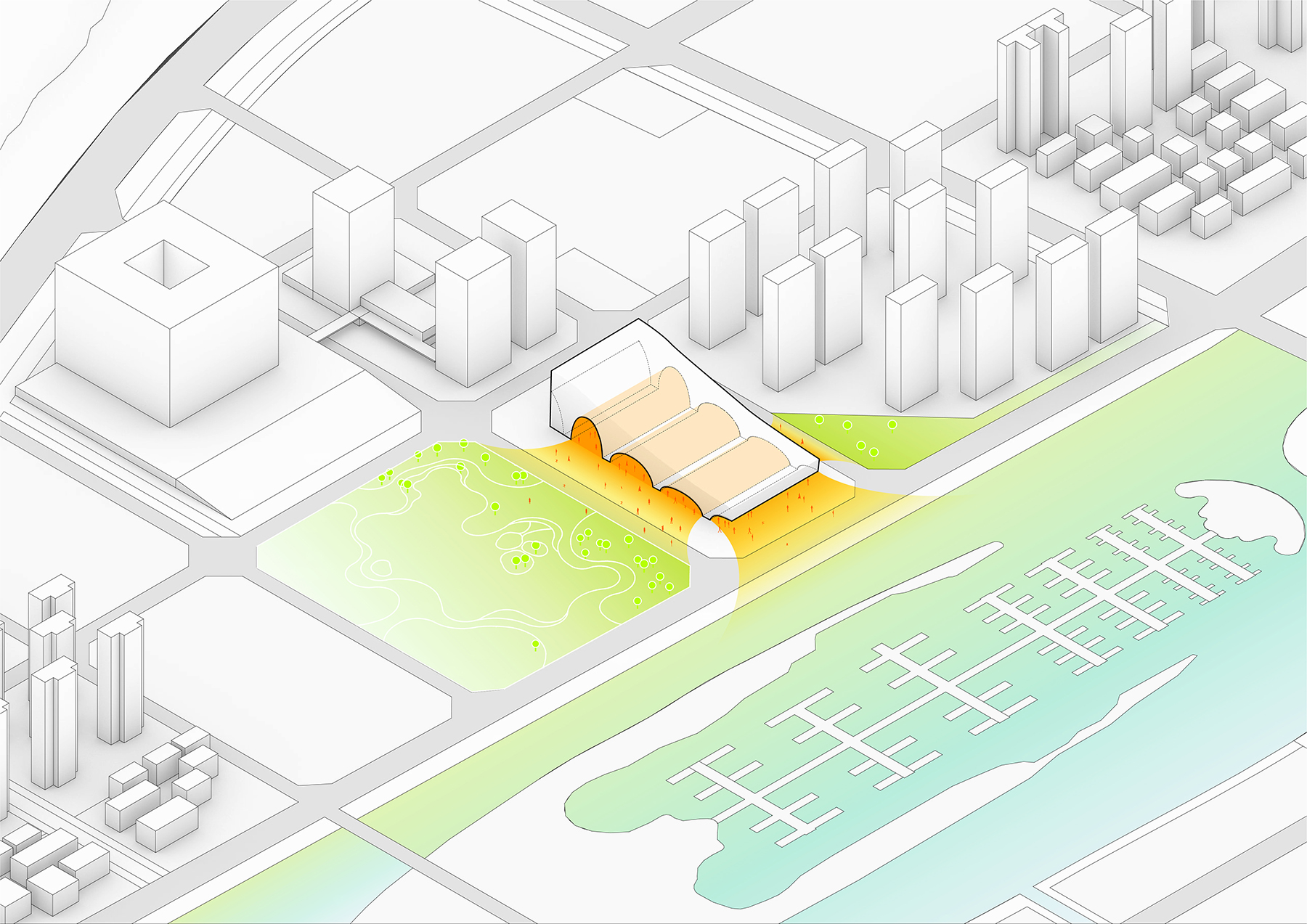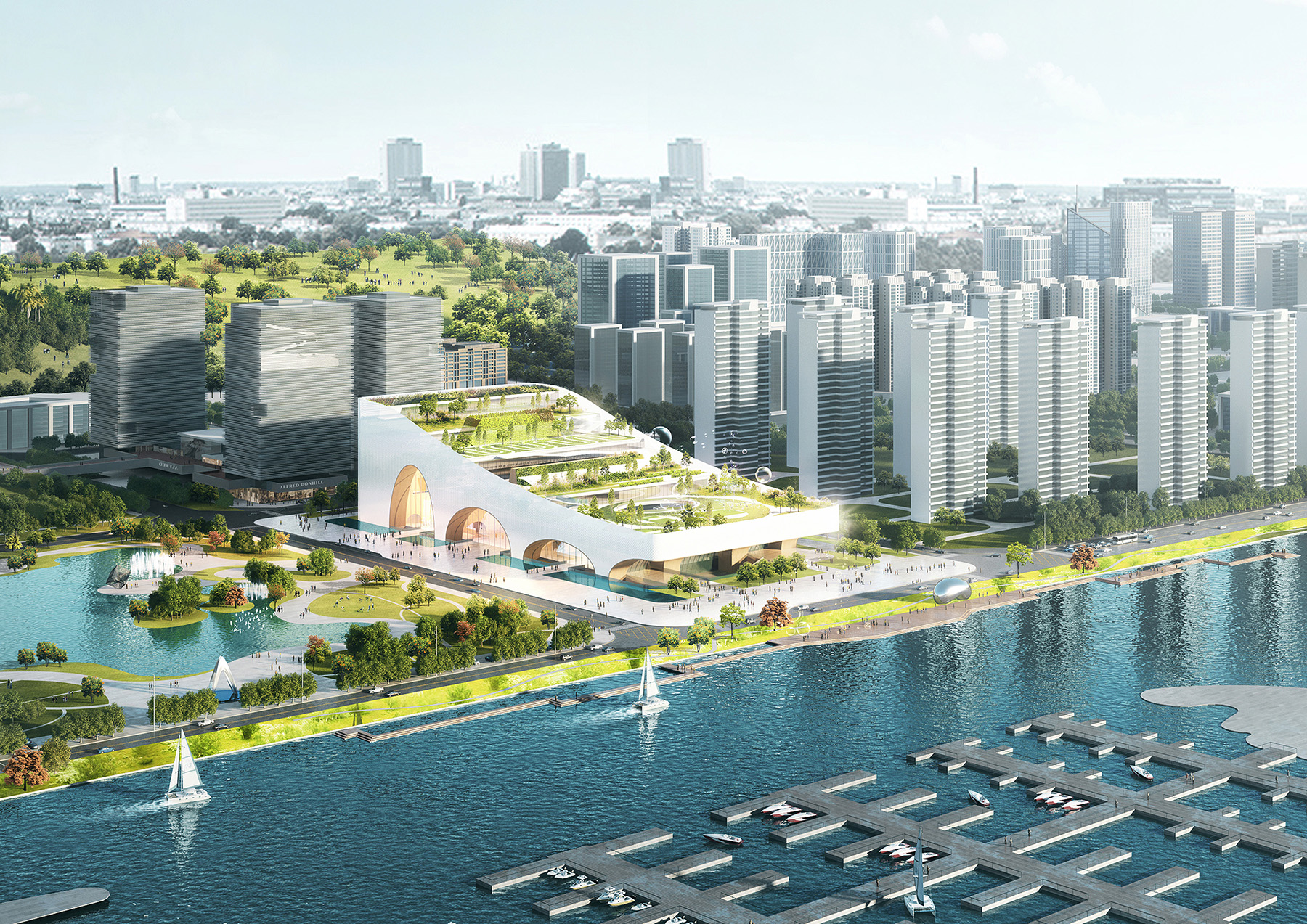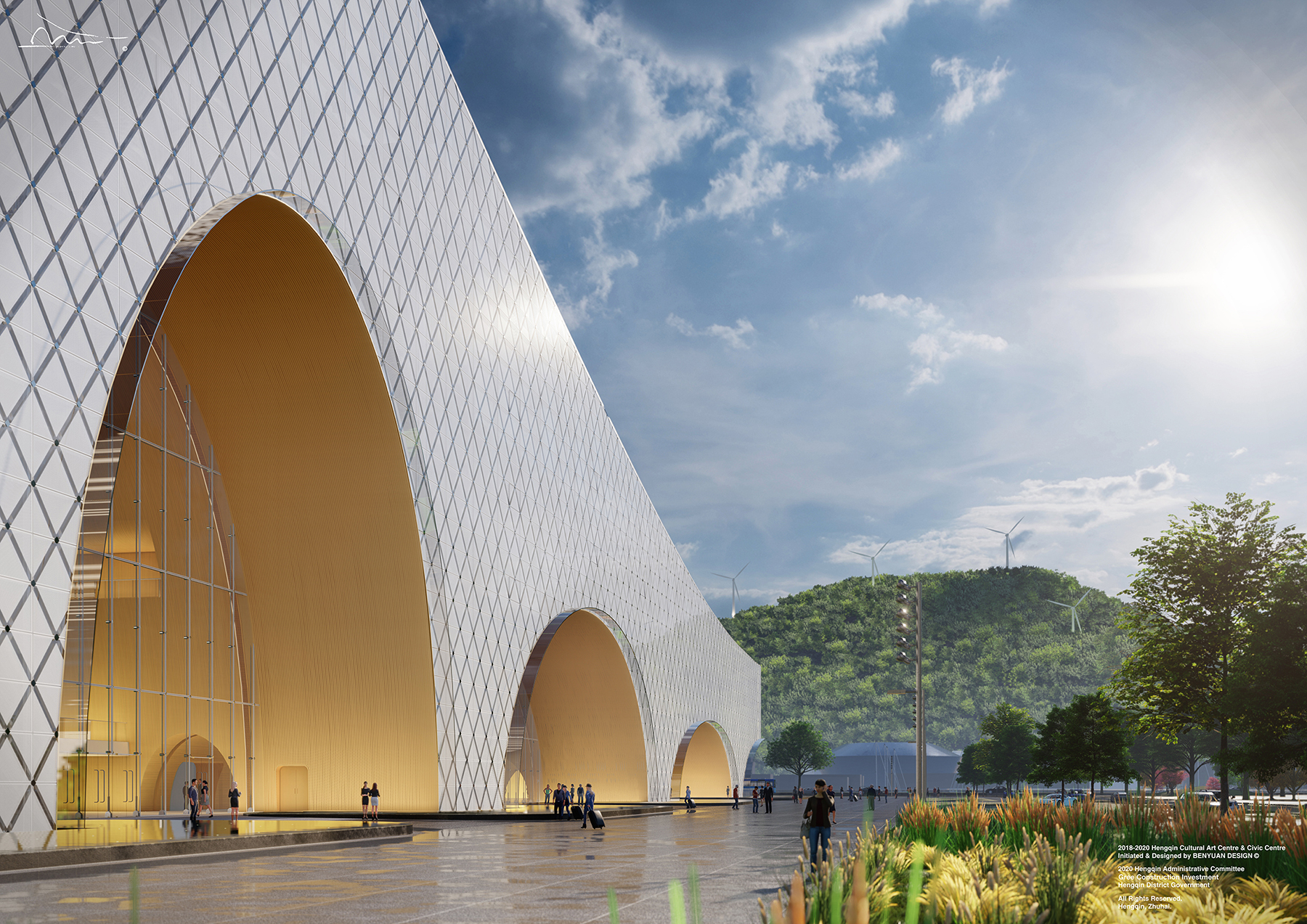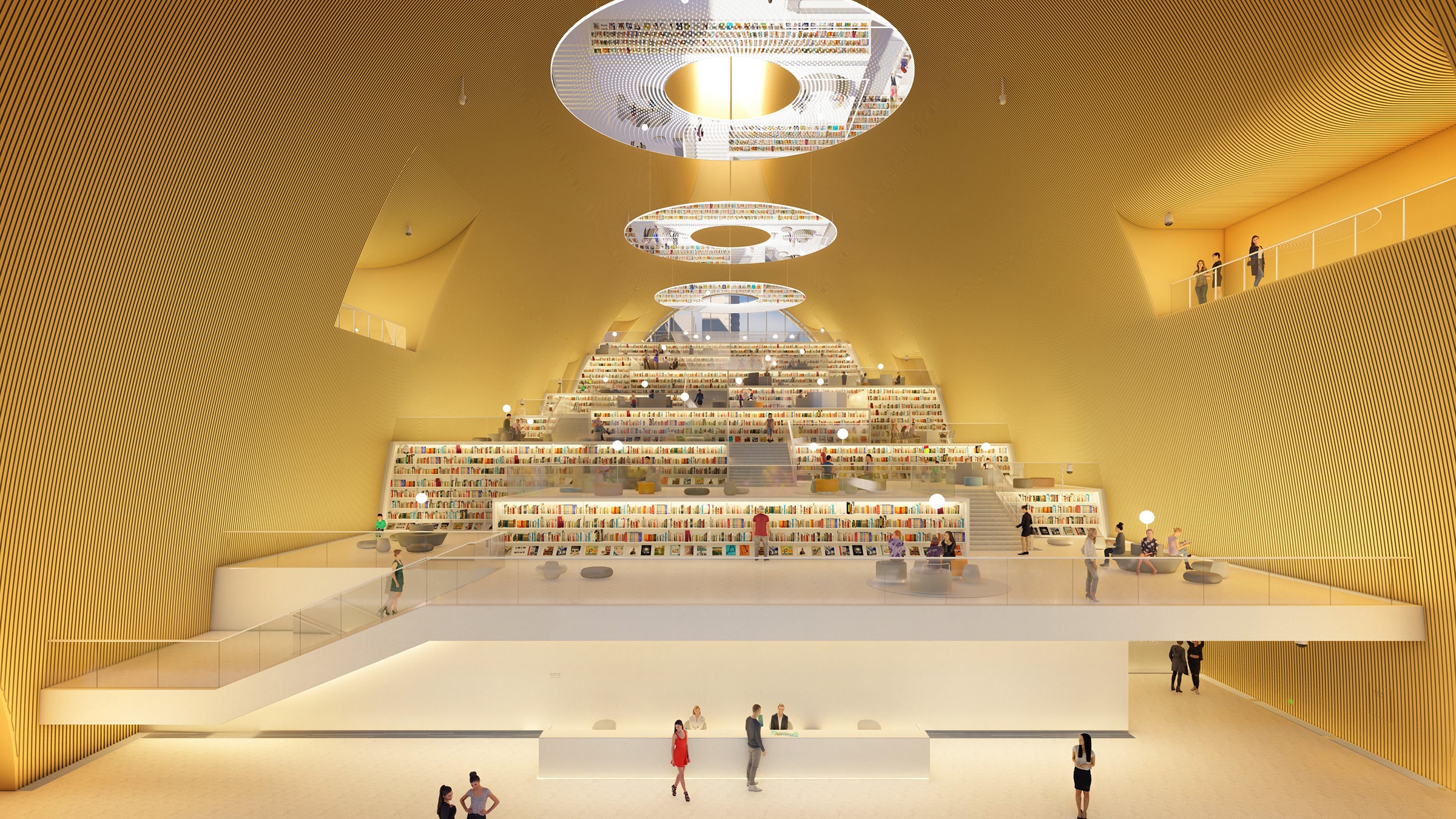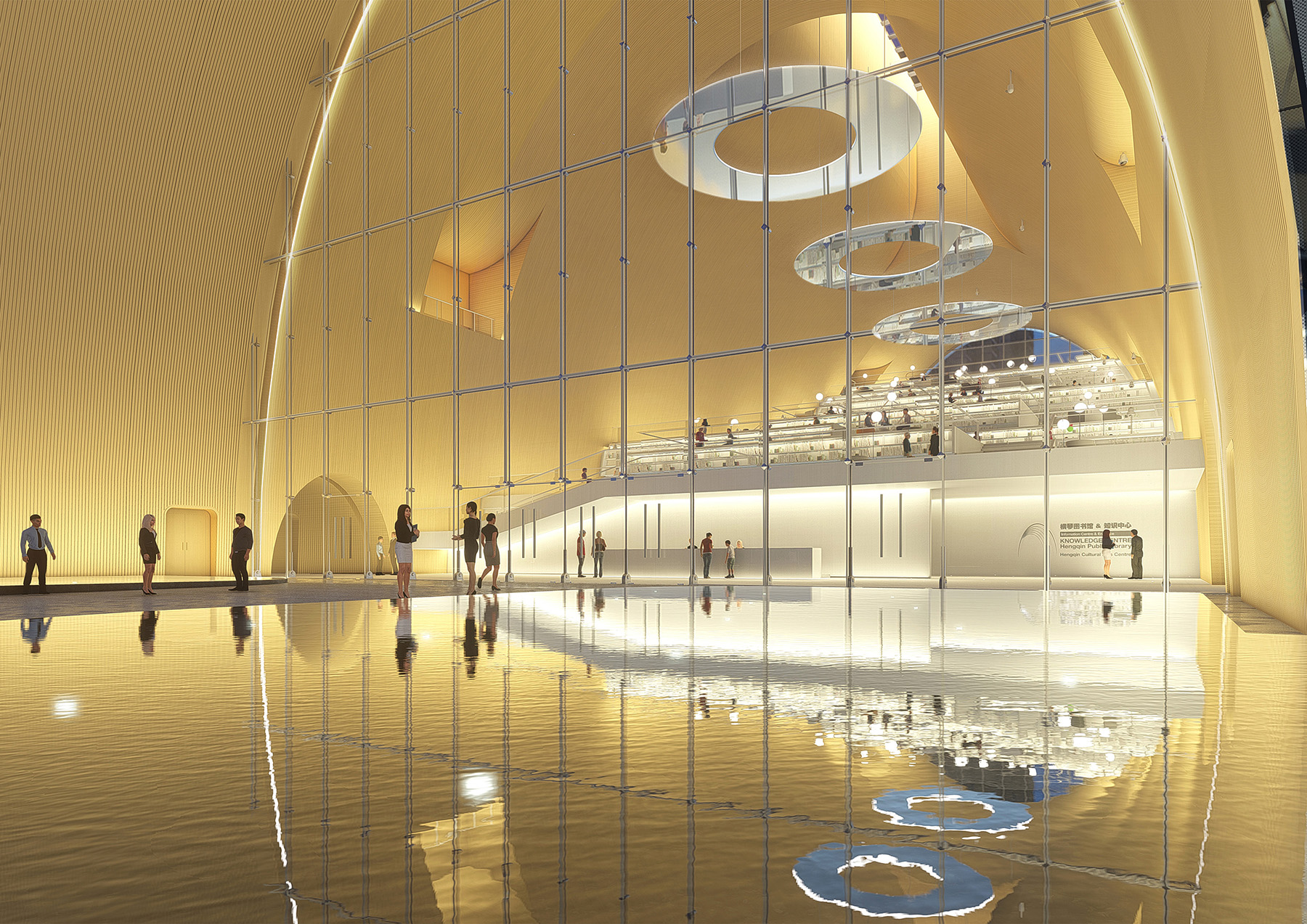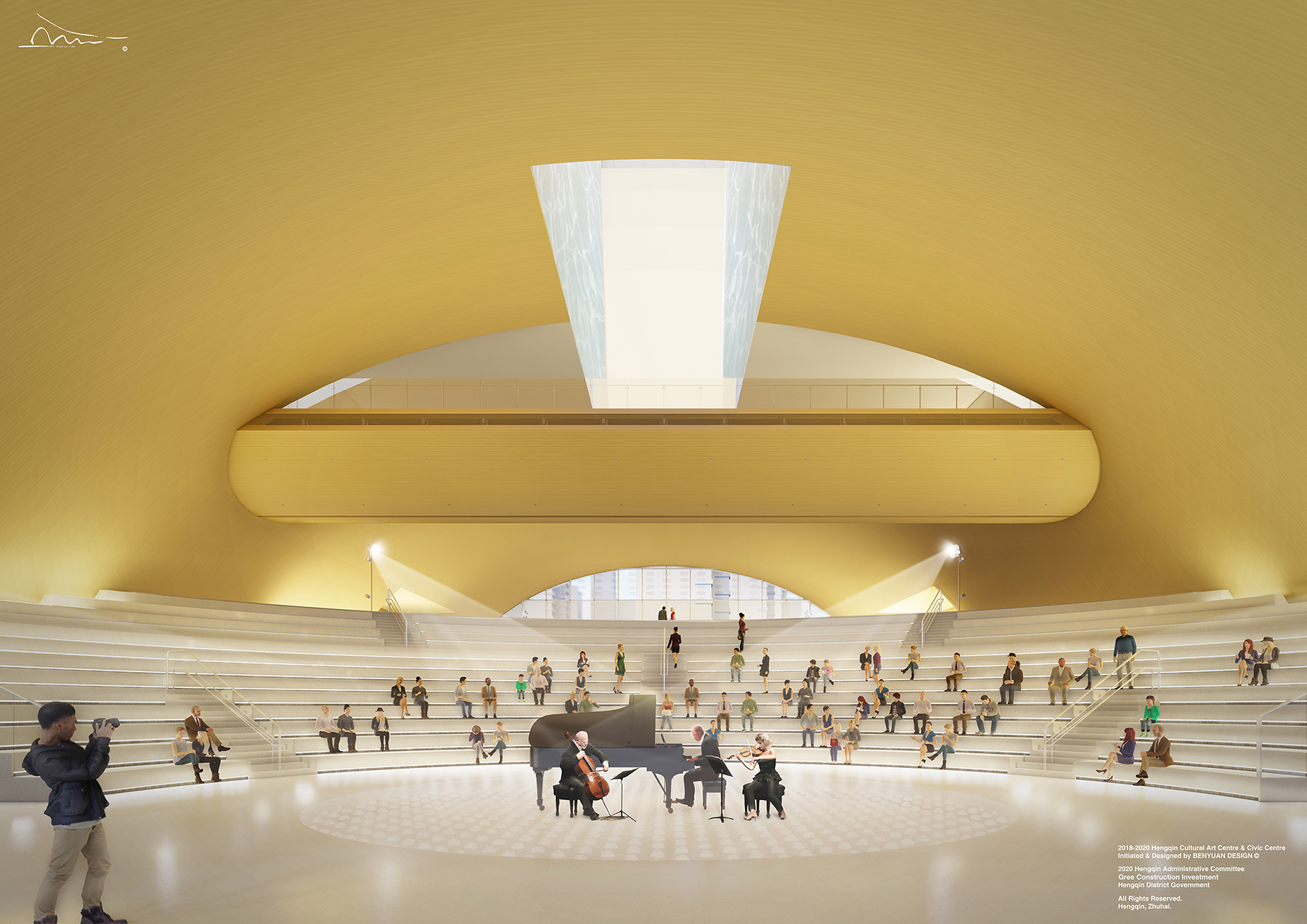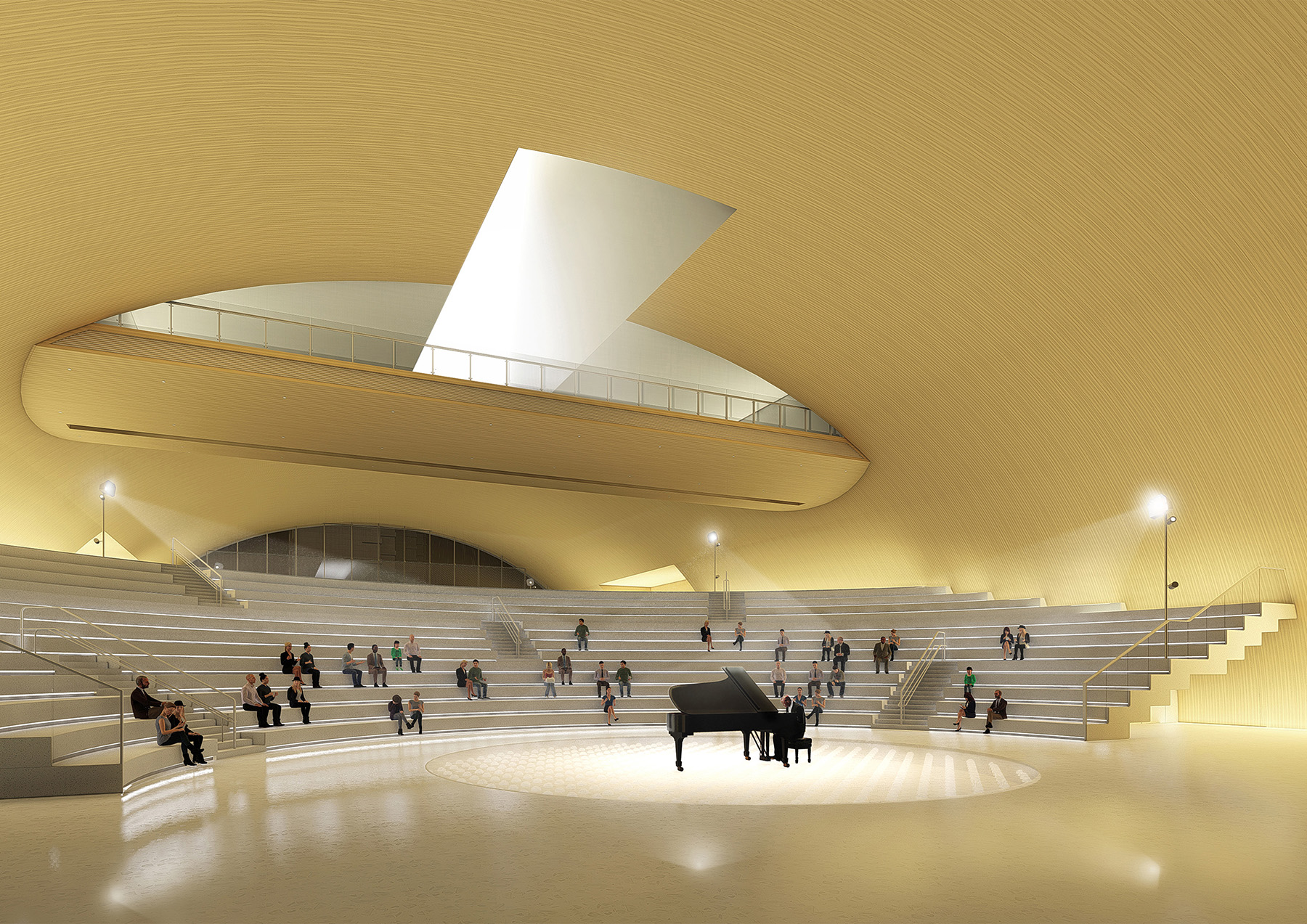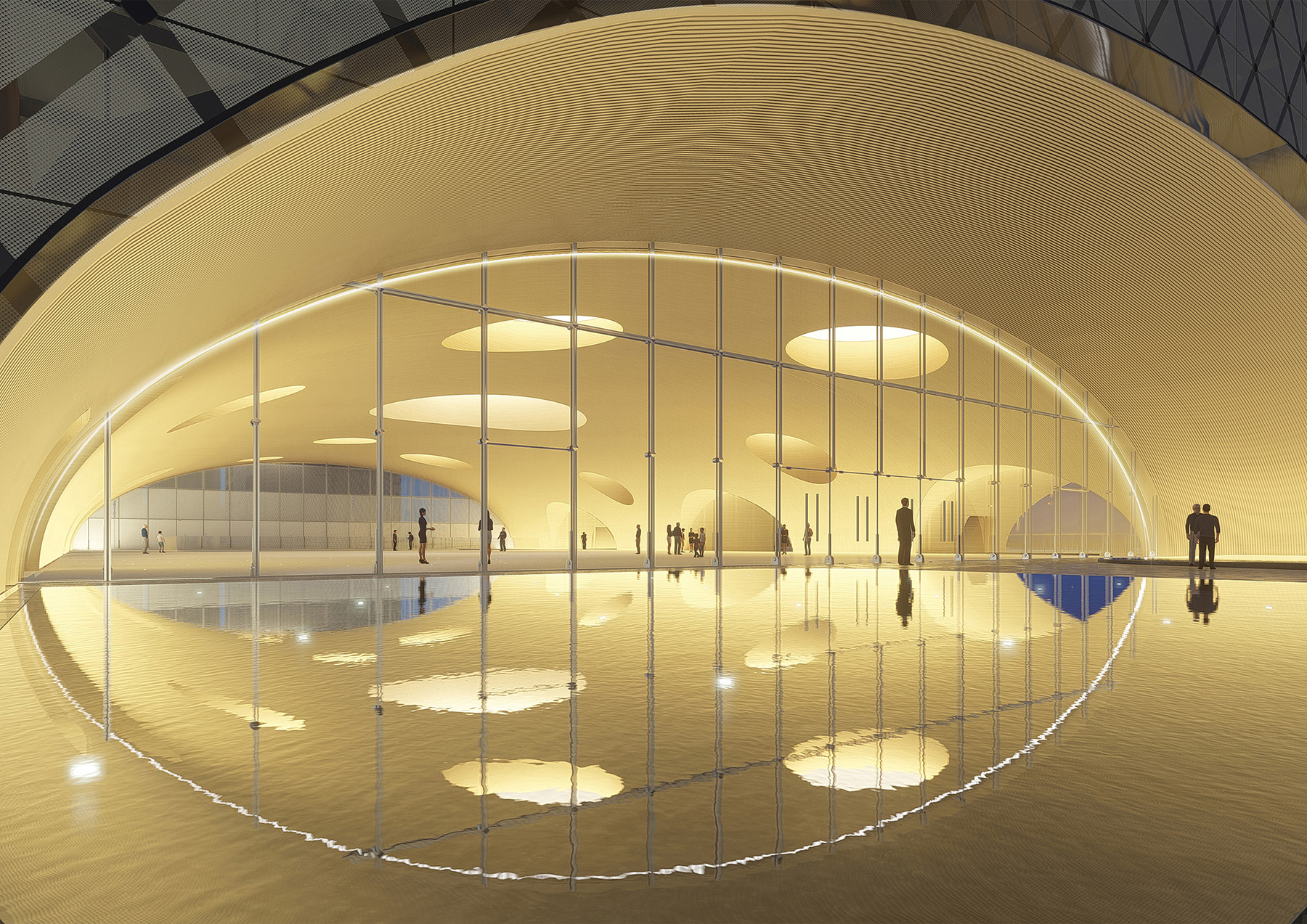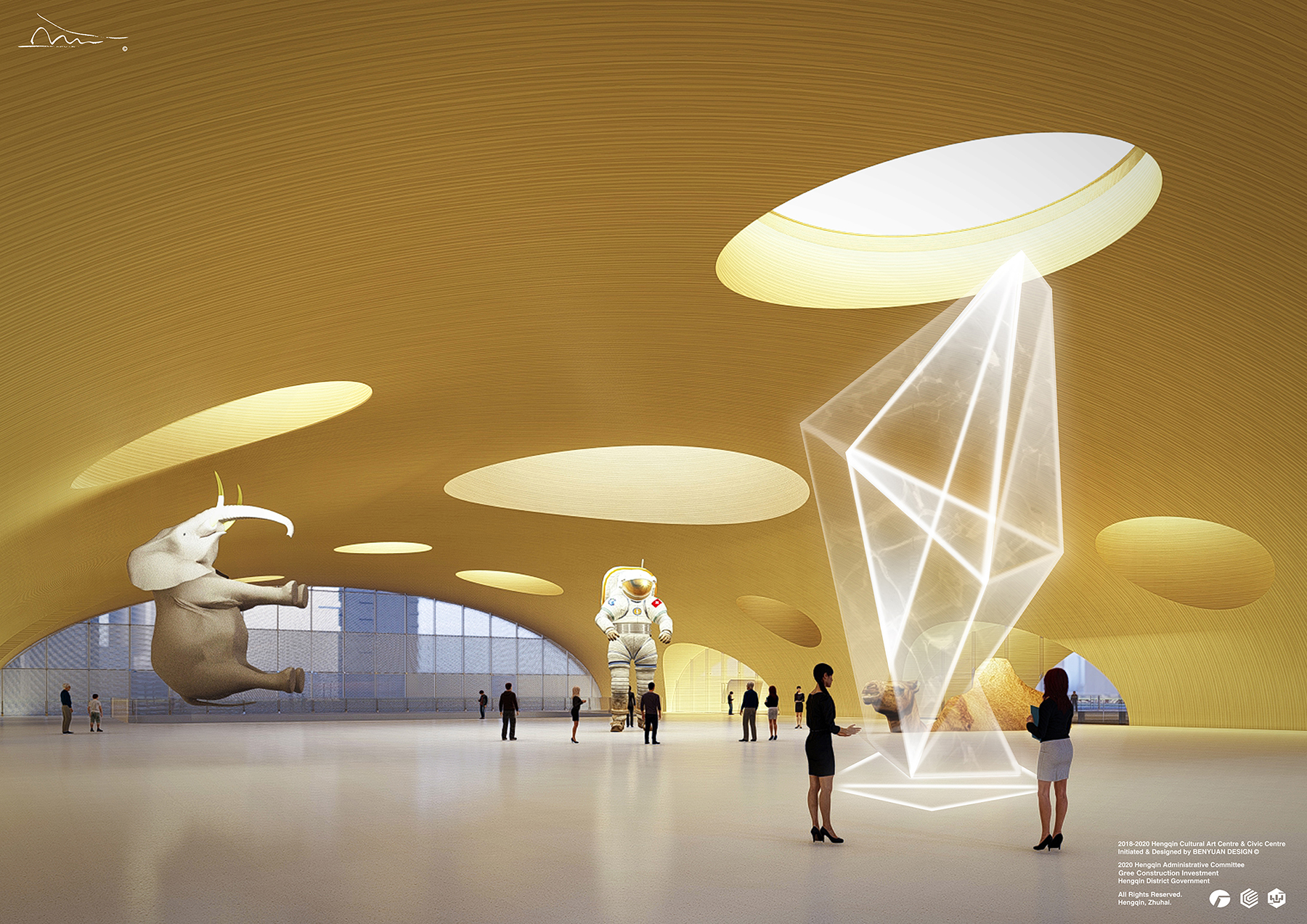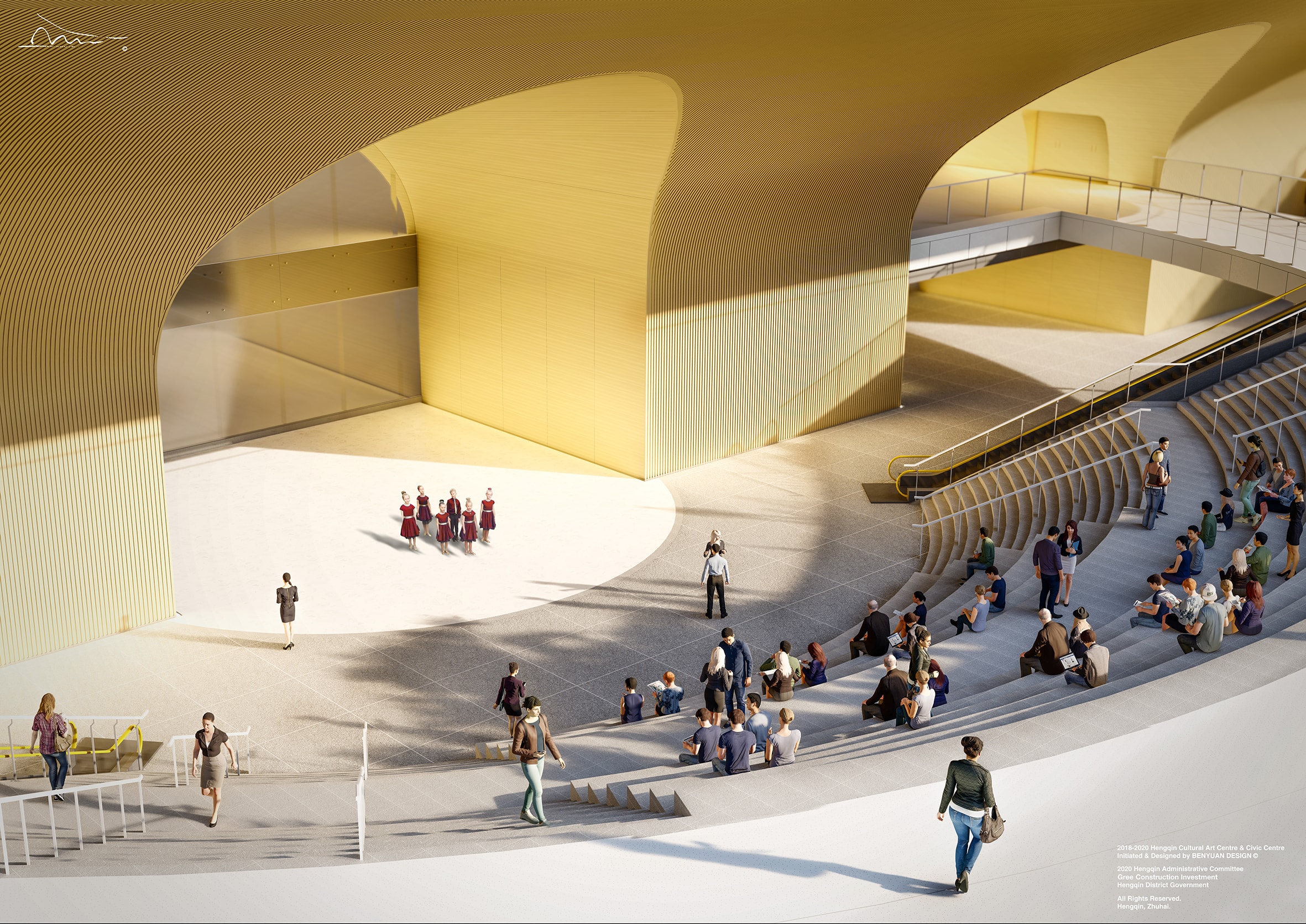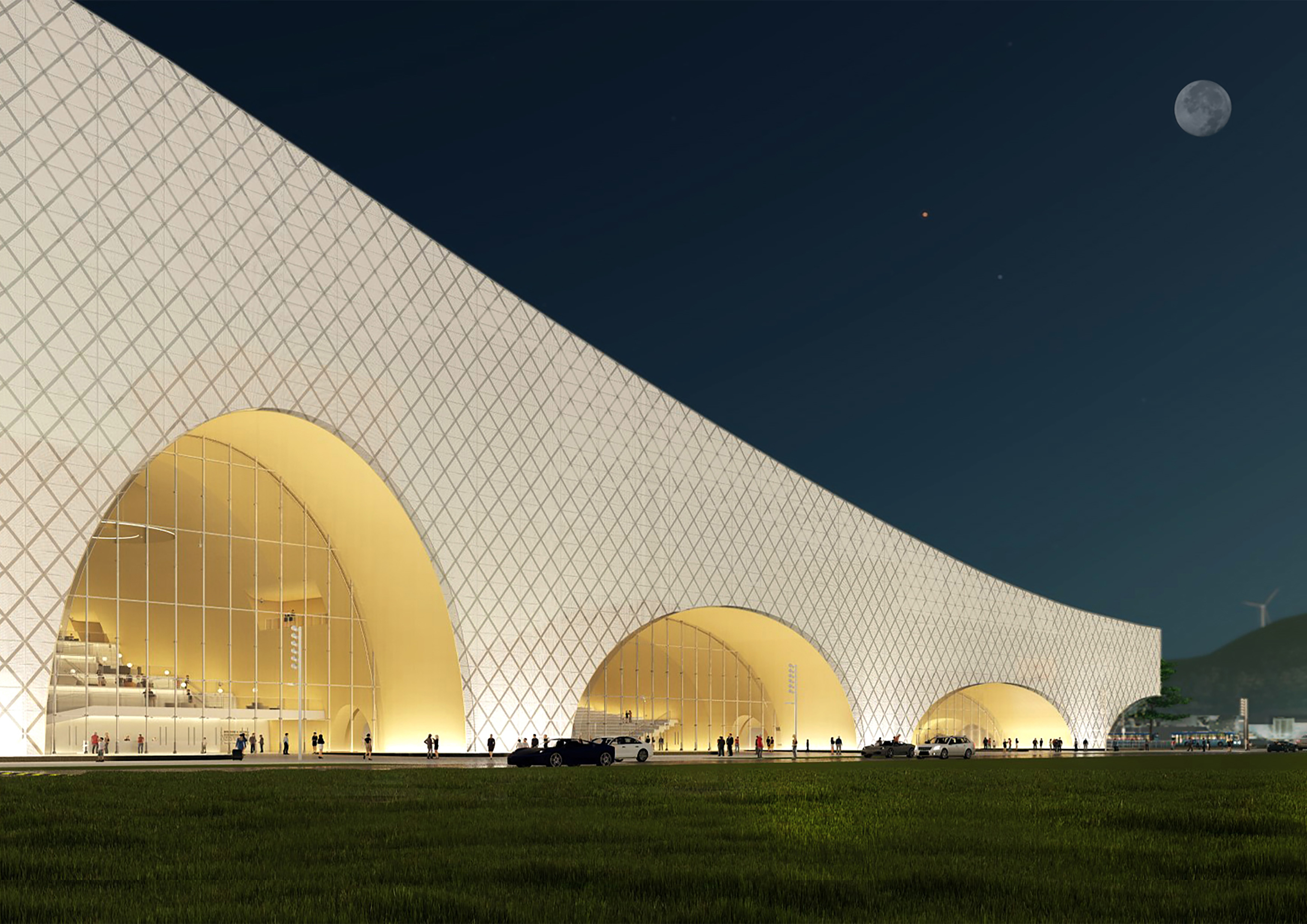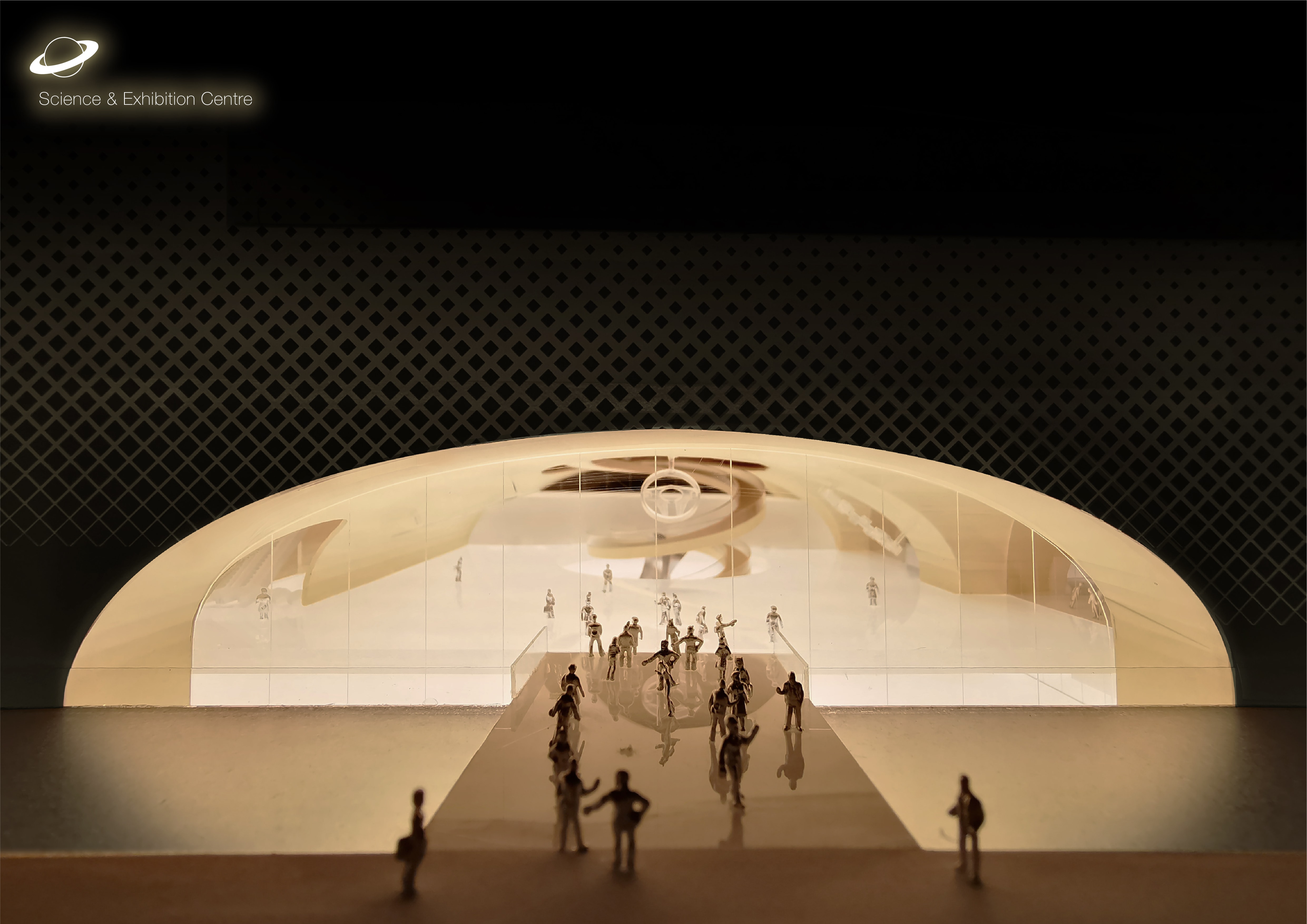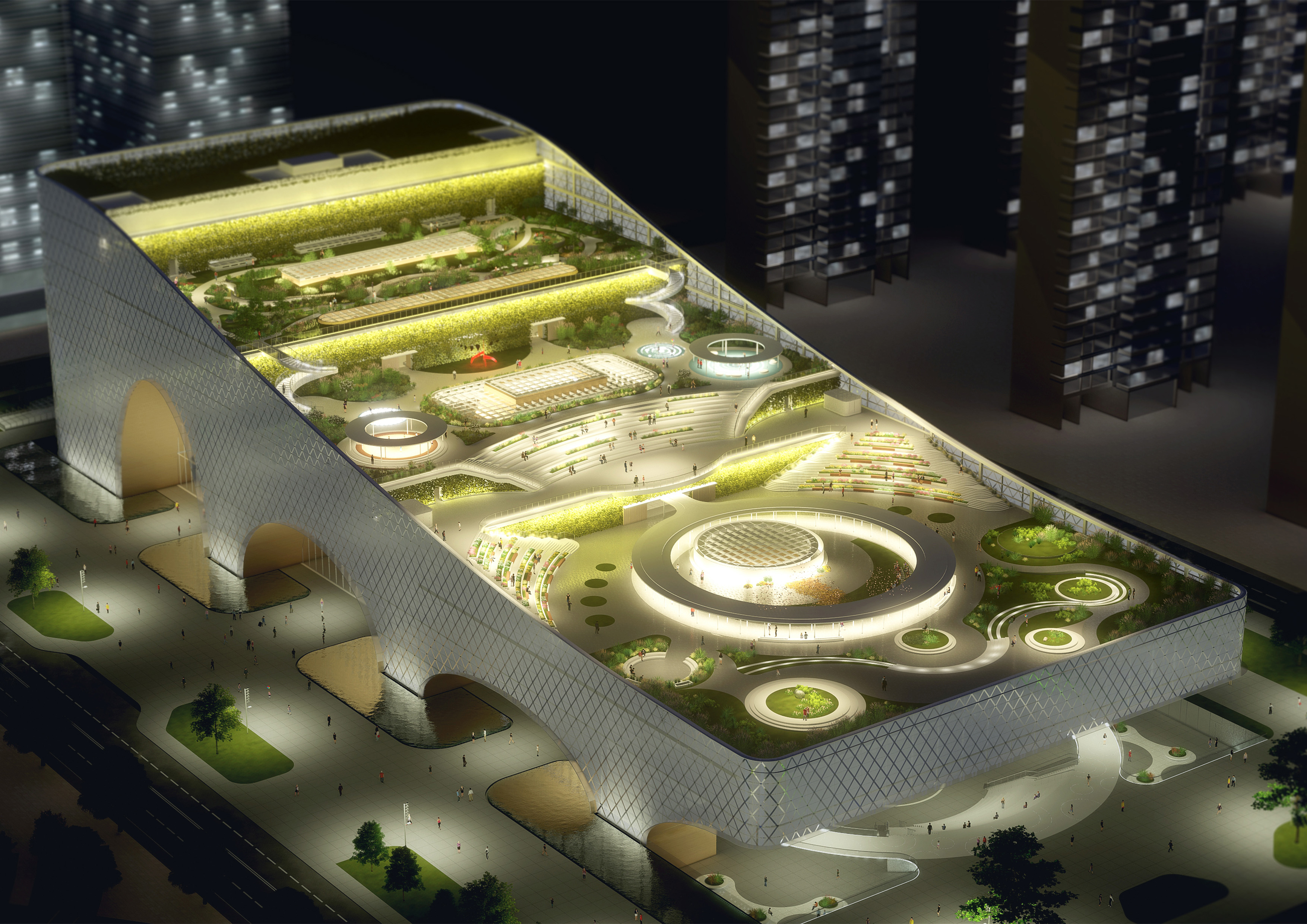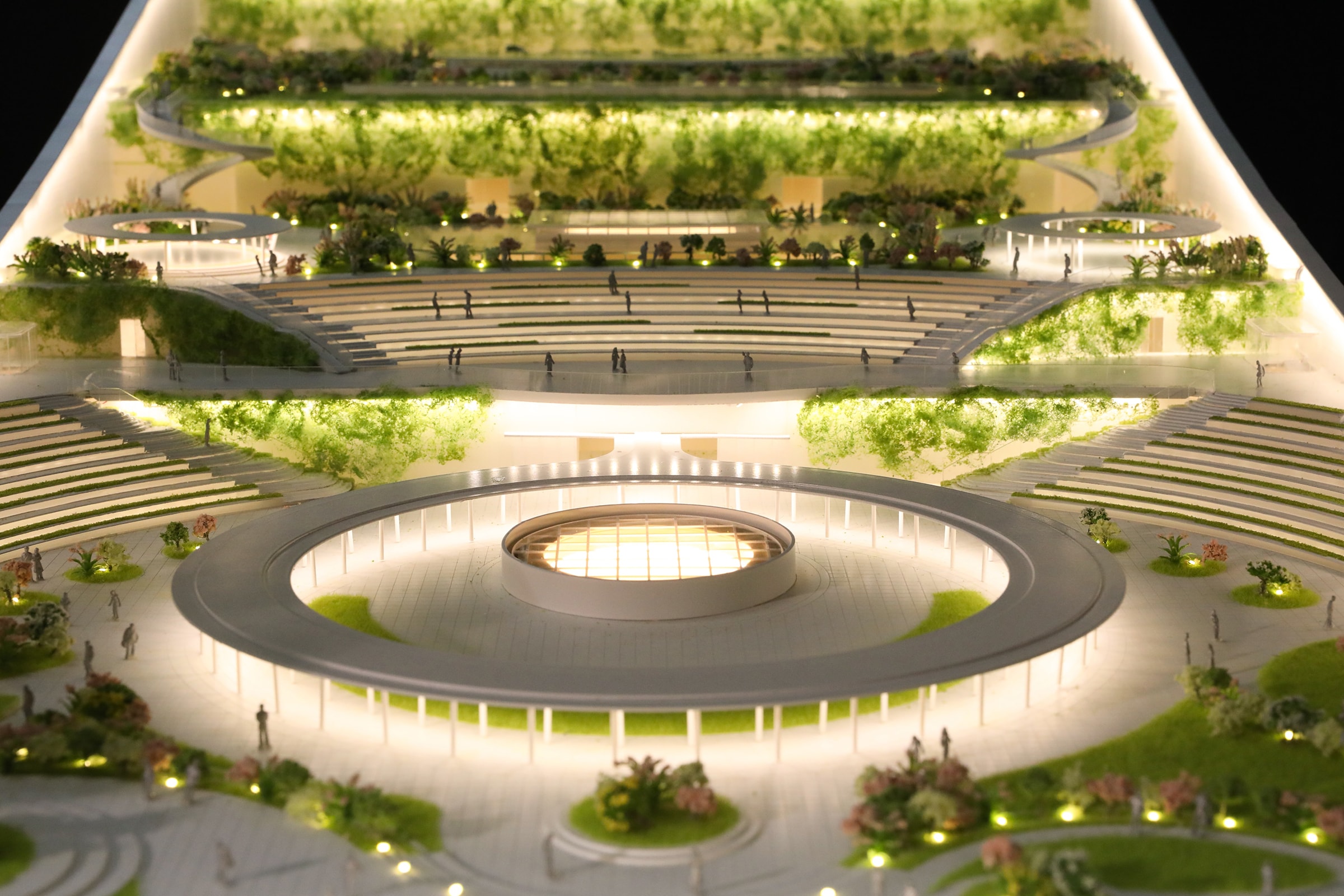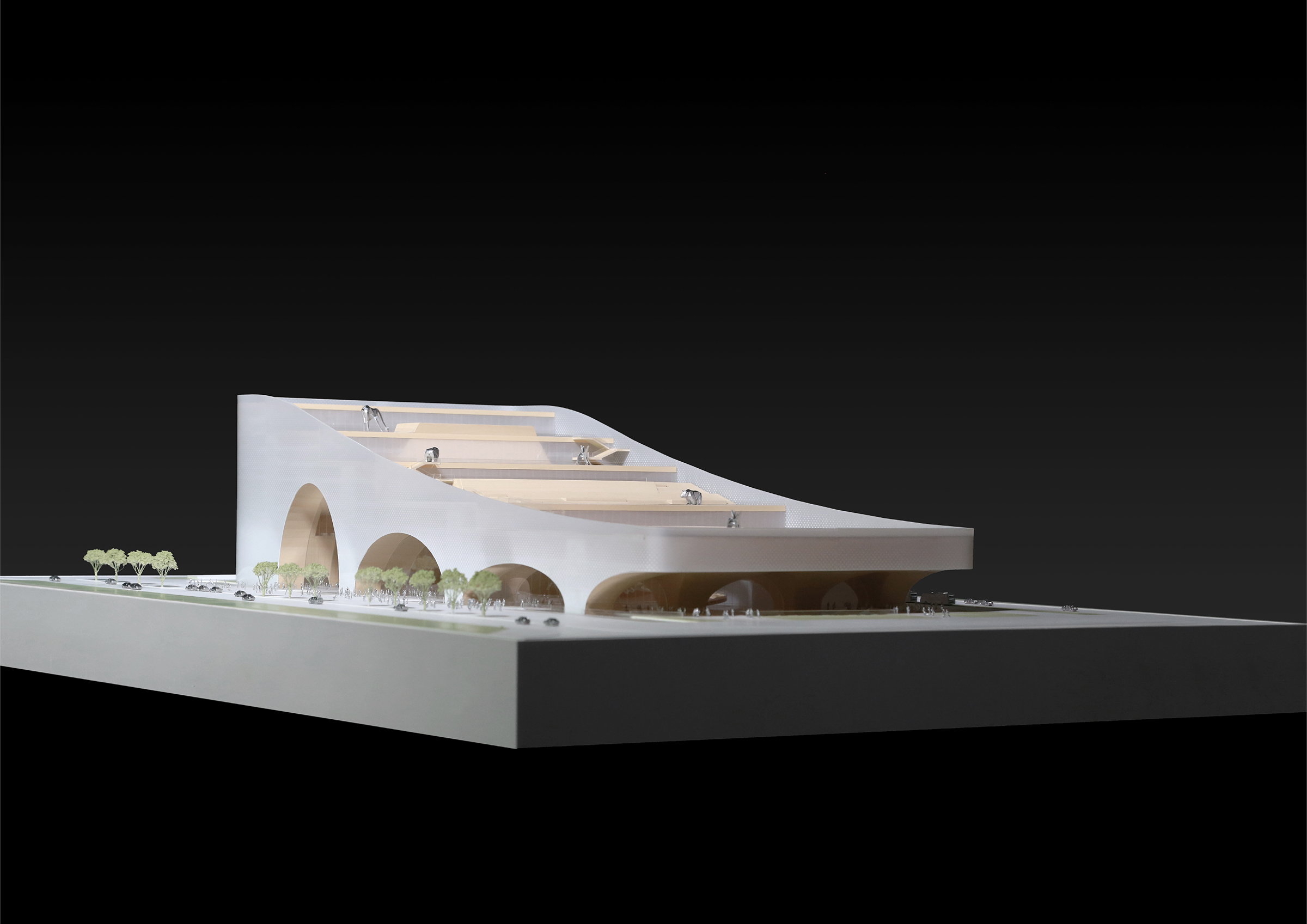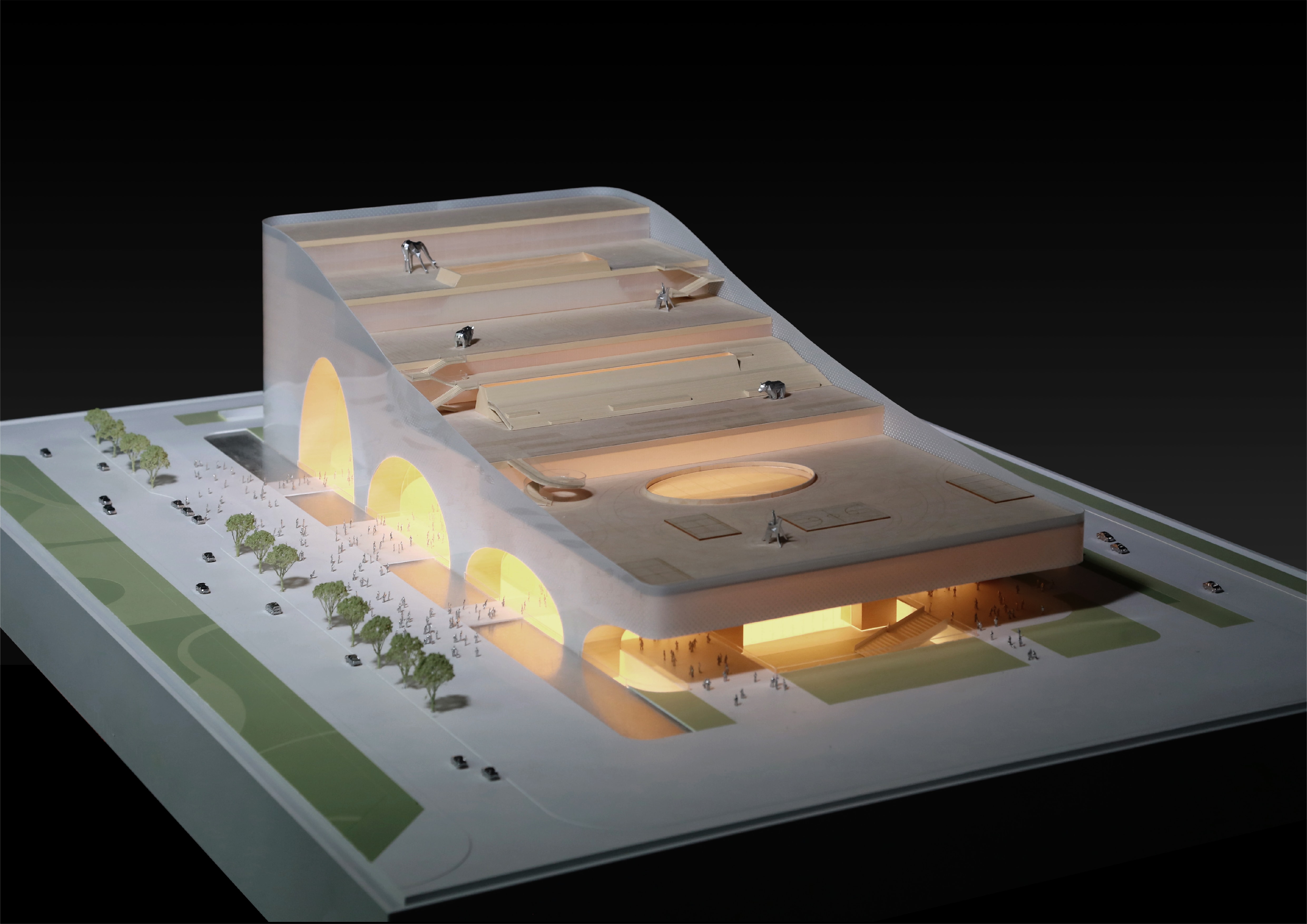Next to Hongkong and Macao, Hengqin New Area is one of the fastest growing cities in China. In order to create a vibrant community, the government launched a competition in 2018 to build a culture and art center to be the central area for this new community. Six years after we won this competition, the entire building will be fully completed in 2024, serving the entire Guangdong-Hong Kong-Macao Greater Bay Area. The site is limited between crowded residential towers and an open city park. Instead of putting nine programs into a “solid” building, we have adopted a strategy of “void”, to create an energetic complex with super-scale porous space for the high-density urban context.
The main public space on the lower level is composed of three giant arch caves coated by wood and bamboo panels, to create a transparent window and a grand open space for urban life. We use inverted catenary as the geometry of arches, which is a common prototype shared by traditional Chinese and classical western culture. During the day, people can directly enjoy the views of the park outside the building. At night, the three transparent arched halls emit soft light and become the stage background for various public events in the park.
Each arch has a unique character with specific atmosphere. In the knowledge hall, crystal book blocks build up a vertical village for readers of all ages. The performance hall in the middle has a big open stage and a black box theater for dancing, concerts, dramas, and operas. The interior of the exhibition hall is a porous space, where cheese holes scatter mysterious light into the space as joints between science and art. These three halls can be experienced not only in a continuous movement but parallel worlds. Above the arches, there are modular space units designed to maximize flexibility for the future.
The building skyline is curved along a catenary from the north hill towards the south river. On the green overlapping urban balconies, there are three dedicated theme parks. At the first ceremony platform , people can hold a wedding or a big birthday party. The semicircular grandstand on the second level gives a great view of outdoor stage performances and the river. Along the spiral stairs, you will walk to the top bamboo garden, where you can have a nice quiet teatime by the sky bookstore.
The curtain wall system of the whole building is composed of white hollow LOW-E printed glass, and the coverage rate of white printing reaches more than 75%. It has obvious shading and heat preservation effects and effectively reduces the overall energy consumption of the building.
There is a huge skylight system above the three arched halls. On the one hand, both sides can be automatically opened to discharge the indoor hot air from the building. On the other hand, the transparency can be adjusted according to the changes of the weather, and the energy consumption of the building's air conditioning system can be reduced. The green plant coverage rate of the four-story roof garden platform exceeds 65%. The rainwater collection system forms a self-irrigation cycle, and at the same time it becomes the most effective insulation layer, which is very important for buildings in hot climates.

